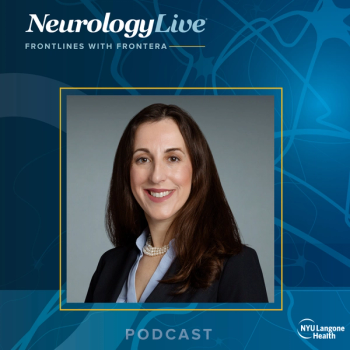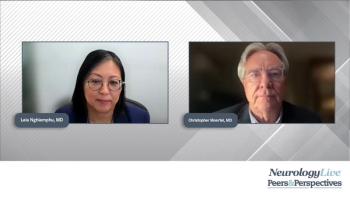
Bridging Sleep Science and Biomarkers in Neurodegeneration: Lea Grinberg, MD, PhD
The neuropathologist at Mayo Clinic Florida discussed why EEG-based sleep biomarkers may help detect Alzheimer disease earlier and how they could enhance clinical trial design. [WATCH TIME: 3 minutes]
WATCH TIME: 3 minutes
"We need to stop thinking cognitive decline is the first symptom—by then, the brain is already deeply affected. Sleep-wake signatures might catch Alzheimer disease much earlier."
In recent years, there has been an increased effort towards the recognition of the early stages of Alzheimer disease (AD), such as subjective cognitive decline and mild cognitive impairment (MCI). Through research, those in the field have shown that sleep impairment and disorders–such as sleep deprivation, insomnia, and sleep-disordered breathing–are related to amyloid-ß (Aß) cerebral levels, the primary marker for AD, and hence possibly increase the risk for the disease. In addition, studies have revealed that sleep disruption contributes to Aß accumulation in the brain, and thus may be largely implied in the complex pathophysiology of AD.
The cross-collaboration between the sleep disorders community and those who treat neurodegenerative conditions like AD was on full display at the
Following her talk, Grinberg sat down to discuss several sleep-related topics, including the overlap between prominent AD biomarkers and changes in sleep. In the interview, she emphasized the clinical potential of incorporating sleep-wake signatures, particularly daytime EEG, as early biomarkers for AD. Grinberg, neuropathologist at Mayo Clinic Florida, also explained that conventional biomarkers like phosphorylated tau 217 and amyloid PET may only detect disease at moderate to late stages, highlighting a need for earlier detection strategies. Furthermore, she spoke on the potential to integrate sleep metrics into AD trial designs, calling for more structured efforts to define sleep-based end points.
Newsletter
Keep your finger on the pulse of neurology—subscribe to NeurologyLive for expert interviews, new data, and breakthrough treatment updates.




















